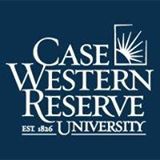Request Demo
Last update 08 May 2025
Bacterial ABC transporter
Last update 08 May 2025
Basic Info
Synonyms- |
Introduction- |
Related
3
Drugs associated with Bacterial ABC transporterMechanism ABC modulators |
Originator Org. |
Active Indication |
Inactive Indication- |
Drug Highest PhasePreclinical |
First Approval Ctry. / Loc.- |
First Approval Date20 Jan 1800 |
US12060318
Patent MiningMechanism- |
Active Org. |
Originator Org. |
Active Indication |
Inactive Indication- |
Drug Highest PhaseDiscovery |
First Approval Ctry. / Loc.- |
First Approval Date20 Jan 1800 |
Mechanism ABC inhibitors |
Active Org. |
Originator Org. |
Active Indication |
Inactive Indication- |
Drug Highest PhaseDiscovery |
First Approval Ctry. / Loc.- |
First Approval Date20 Jan 1800 |
100 Clinical Results associated with Bacterial ABC transporter
Login to view more data
100 Translational Medicine associated with Bacterial ABC transporter
Login to view more data
0 Patents (Medical) associated with Bacterial ABC transporter
Login to view more data
1,112
Literatures (Medical) associated with Bacterial ABC transporter01 Dec 2025·Molecular Biology Reports
The impact of the ATP-binding cassette (ABC) transporter family on multidrug resistance in head and neck tumors
Review
Author: Liu, Yuehui ; Zhang, Wanqing ; Zhu, Zhengxin
01 Apr 2025·Insect Science
Chromosome‐level genome of the parthenogenetic booklouse Liposcelis bostrychophila reveals high heterozygosity and a nonhomologous chromosome
Article
Author: Sun, Jun ; Feng, Hua‐Yue ; Chen, Yu‐Ang ; Li, Yi ; Wei, Dan‐Dan ; Wang, Jin‐Jun ; Jiang, Shi‐Die ; Guo, Peng‐Yu
19 Mar 2025·Journal of Agricultural and Food Chemistry
The miRNA-275 Targeting RpABCG23L is Involved in Pyrethroid Resistance in the Bird Cherry-Oat Aphid, a Serious Agricultural Pest
Article
Author: Li, Sisi ; Tang, Hongcheng ; Xu, Zhimin ; Chen, Maohua ; Peng, Xiong ; Chen, Chao
10
News (Medical) associated with Bacterial ABC transporter25 Apr 2023
CAMBRIDGE, Mass.--(BUSINESS WIRE)-- Rectify Pharmaceuticals, Inc., (“Rectify”) a biotechnology company developing small molecule disease-modifying therapeutics that restore and enhance ABC transporter function, today announced the appointment of Sachiyo Minegishi as Chief Operating Officer.
“We are delighted to welcome Sachiyo to Rectify’s management team and look forward to drawing on her diverse leadership experiences leading biotech companies as we advance our novel programs through the clinic and into commercialization,” said Rajesh Devraj, Ph.D., President and Chief Executive Officer of Rectify. “Sachiyo is an accomplished leader skilled in navigating companies through important clinical, financial, and corporate milestones, and her expertise will be instrumental in advancing our pipeline focused on restoring ABC transporter function for patients with serious genetic and large common ABC transporter mediated diseases.”
Ms. Minegishi brings 20 plus years’ experience in the biotechnology industry. She most recently served as Chief Financial Officer at Akouos, Inc., where she helped lead the acquisition of the company by Eli Lilly. Previously, Ms. Minegishi was Vice President, Global Program Lead at bluebird bio and in charge of leading cross-functional teams through global development for a portfolio of gene therapies for Sickle Cell Disease. Earlier, Ms. Minegishi held leadership roles at Aegerion Pharmaceuticals, Human Genome Sciences, Genzyme, and Amgen. She began her career in investment banking at Merrill Lynch, with a focus on execution of equity financing and mergers and acquisitions in the biotechnology industry. Ms. Minegishi earned a B.S. in Chemical Engineering and Economics from the Massachusetts Institute of Technology and an M.B.A. from the Wharton School of the University of Pennsylvania.
“Rectify is the first to characterize and address the broad opportunity of the ABC transporter proteome,” said Ms. Minegishi. “I am excited to work with the team and the individuals and families affected by ABC transporter mediated diseases to advance Rectify’s first development candidates into the clinic.”
About Rectify Pharmaceuticals, Inc. (“Rectify”)
Rectify is developing Positive Functional Modulators (PFMs), disease-modifying therapies that restore and enhance ABC transporter function to address the underlying cause of serious ABC transporter mediated diseases. Rectify is the first company to directly address the untapped therapeutic potential of the ABC transporter target class.
ATP-binding cassette (ABC) transporters are a 48-member superfamily of membrane-bound proteins that actively export a diverse range of substrates (e.g., lipids, ions, peptides, and salts) across lipid membranes. Rectify has built a breakthrough ABC transporter product platform that is enabling efficient and rapid discovery of first-in-class small molecule therapies that restore and enhance ABC transporter function for rare and common liver, biliary, eye and CNS diseases.
Rectify was founded and seeded by Atlas Venture who co-led the $100M Series A round with Omega Funds and were joined by Forbion and Longwood Fund. The company is headquartered in Cambridge, Massachusetts.
For more information, please visit .
Executive ChangeAcquisition
14 Feb 2023
Dr. Tuyen Ong, M.D., M.B.A. appointed to Board of Directors and Dr. Jason Campagna, M.D., Ph.D. to Scientific Advisory Board
CAMBRIDGE, Mass.--(BUSINESS WIRE)-- Rectify Pharmaceuticals, Inc., (“Rectify”) a biotechnology company developing small molecule disease-modifying therapeutics that restore and enhance ABC transporter function, today announced the appointments of Tuyen Ong, M.D., M.B.A., to the Board and Directors, and Jason Campagna, M.D., Ph.D., to the Scientific Advisory Board.
“We are excited to announce the additions of Dr. Ong and Dr. Campagna to our Board of Directors and Scientific Advisory Board, respectively, as they will further support Rectify’s mission to develop a pipeline of therapeutics for patients with serious genetic and large common ABC transporter mediated diseases,” said Rajesh Devraj, Ph.D., President and Chief Executive Officer of Rectify. “Dr. Ong has a proven track record of building world class companies and a wealth of experience in the development of novel therapies. We look forward to drawing on his expertise as we advance our initial pipeline candidates into and through the clinic. Dr. Campagna has deep expertise in biliary and liver disease drug development and extensive clinical development experience. Both Dr. Ong and Dr. Campagna will be important advisors for the company as we continue to advance our ABC transporter-targeted disease-modifying therapeutics for patients. We welcome them both to Rectify.”
Dr. Tuyen Ong is currently the Chief Executive Officer at Ring Therapeutics and a CEO-Partner at Flagship Pioneering. Prior to Ring, Dr. Ong was Senior Vice President, Head of the Ophthalmology Franchise at Biogen and was Chief Development Officer at Nightstar Therapeutics until its acquisition by Biogen in 2019. Additionally, while at Nightstar, Dr. Ong was involved with the company’s NASDAQ IPO. Previously, Dr. Ong served as Chief Medical Officer at PTC Therapeutics and was responsible for progressing its pipeline of therapies for rare and genetic diseases. He also held leadership roles at Bausch and Lomb and at Pfizer, with more than 20 years’ experience in clinical and drug development. Dr. Ong was awarded his M.D. from University College London and his M.B.A. from New York University Stern School of Business.
Dr. Jason Campagna currently serves as the Chief Medical Officer at Q32 Bio Inc. Prior to this, Dr. Campagna served as Chief Medical Officer at Intercept Pharmaceuticals where he had global responsibility for major functions supporting the Primary Biliary Cholangitis (PBC) business, Non-Alcoholic Steatohepatitis (NASH) development and pipeline efforts. Before becoming Chief Medical Officer, Dr. Campagna led the Global NASH Program at Intercept, with responsibility for implementation and execution of the NASH Program, culminating in the first submitted NDA for a therapeutic intended to treat patients with NASH. Dr. Campagna has also held a number of roles of increasing responsibility at The Medicines Company, was Chief Medical Quality Officer at Cottage Health System, and has held faculty appointments at the University of Pennsylvania and Massachusetts General Hospital. Dr. Campagna obtained his Ph.D. and M.D., as well as his bachelor’s degree in Cellular and Molecular Pharmacology/Biology, from the University of Miami Miller School of Medicine.
About Rectify Pharmaceuticals, Inc. (“Rectify”)
Rectify is developing Positive Functional Modulators (PFMs), disease-modifying therapies that restore and enhance ABC transporter function to address the underlying cause of serious ABC transporter mediated diseases. Rectify is the first company to directly address the untapped therapeutic potential of the ABC transporter target class.
ATP-binding cassette (ABC) transporters are a 48-member superfamily of membrane-bound proteins that actively export a diverse range of substrates (e.g., lipids, ions, peptides, and salts) across lipid membranes. Rectify has built a breakthrough ABC transporter product platform that is enabling efficient and rapid discovery of first-in-class small molecule therapies that restore and enhance ABC transporter function for rare and common liver, biliary, eye and CNS diseases.
Rectify was founded and seeded by Atlas Venture who co-led the $100M Series A round with Omega Funds and were joined by Forbion and Longwood Fund. The company is headquartered in Cambridge, Massachusetts.
For more information, please visit .
Executive ChangeIPO
12 Dec 2022
CAMBRIDGE, Mass.--(BUSINESS WIRE)-- Rectify Pharmaceuticals, Inc., (“Rectify”) a biotechnology company developing small molecule disease-modifying therapeutics that restore and enhance ABC transporter function, announced the publication of an article highlighting the therapeutic potential of the ABC transporter class in Trends in Molecular Medicine. The article, titled “ABC transporters: human disease and pharmacotherapeutic potential” is available online via this link.
“At Rectify we believe the ABC transporter superfamily has broad biological relevance to human physiology, and represents a compelling opportunity for the development of small molecule therapies”, said Jonathan Moore, Ph.D., Founder and Chief Scientific Officer. “Our Trends in Molecular Medicine article highlights the important functional role played by this class of transporters across several organs that should spur the development of novel ABC transporter therapies to treat both rare and common disease.”
The review article outlines the biological and functional relevance of the 48 human ABC transporters, and describes the roles that this superfamily of proteins plays in human disease. To date, 21 ABC transporters have been identified as etiological drivers of rare monogenic disease, while many others are linked to the predisposition, severity, and symptomology of complex and common diseases. The publication details both how mutations in 21 ABC transporter genes can give rise to rare disorders of the liver, retina, lung and nervous system (amongst others), and also how ABC transporters can contribute to disease pathogenesis in multigenic or complex diseases. This broad pathophysiological relevance, combined with the pharmacological proof-of-principle demonstrated by currently approved ABC transporter-directed modulators for cystic fibrosis (caused by the ABCC7 gene), points to the value of further research into this target class and their potential to transform the care of myriad human diseases.
About Rectify Pharmaceuticals, Inc. (“Rectify”)
Rectify is developing Positive Functional Modulators (PFMs), disease-modifying therapies that restore and enhance ABC transporter function to address the underlying cause of serious ABC transporter mediated diseases. Rectify is the first company to directly address the untapped therapeutic potential of the ABC transporter target class.
ATP-binding cassette (ABC) transporters are a 48-member superfamily of membrane-bound proteins that actively export a diverse range of substrates (e.g., lipids, ions, peptides, and salts) across lipid membranes. Rectify has built a breakthrough ABC transporter product platform that is enabling efficient and rapid discovery of first-in-class small molecule therapies that restore and enhance ABC transporter function for rare and common liver, biliary, eye and CNS diseases.
Rectify was founded and seeded by Atlas Venture who co-led the $100M Series A round with Omega Funds who were joined by Forbion and Longwood Fund. The company is headquartered in Cambridge, Massachusetts.
For more information, please visit .
Analysis
Perform a panoramic analysis of this field.
login
or

AI Agents Built for Biopharma Breakthroughs
Accelerate discovery. Empower decisions. Transform outcomes.
Get started for free today!
Accelerate Strategic R&D decision making with Synapse, PatSnap’s AI-powered Connected Innovation Intelligence Platform Built for Life Sciences Professionals.
Start your data trial now!
Synapse data is also accessible to external entities via APIs or data packages. Empower better decisions with the latest in pharmaceutical intelligence.
Bio
Bio Sequences Search & Analysis
Sign up for free
Chemical
Chemical Structures Search & Analysis
Sign up for free



